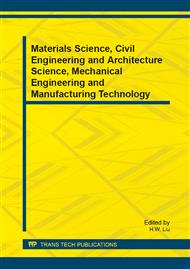p.312
p.316
p.322
p.329
p.333
p.337
p.342
p.346
p.350
Study of Deformation Rule of Ordovician Limestone in Unloading of High Confining Compress
Abstract:
Under unloading condition, the characteristics of rock are different from them under loading condition. This paper talks about the characteristics of Ordovician limestone under loading and unloading condition of high compress which were taken from North Tian Mountain. The testing results indicated that: The lateral deformation and bulk deformation of rock sample are clearly in the process of unloading. Plastic deformation is not notability in the unloading condition. After the peak value in the stress-strain curve, the stress decrease quickly, it is showed that the brittleness characteristic is the better remarkable under unloading condition than loading condition. Under unloading condition, deformation modulus E50 and Possion ratio μ is quadric with the confining compress.
Info:
Periodical:
Pages:
333-336
Citation:
Online since:
January 2014
Authors:
Price:
Сopyright:
© 2014 Trans Tech Publications Ltd. All Rights Reserved
Share:
Citation:


